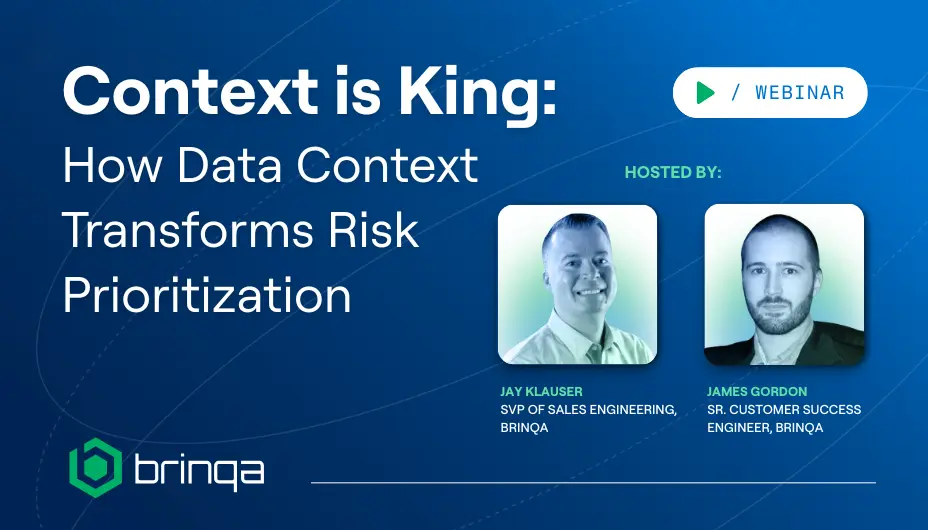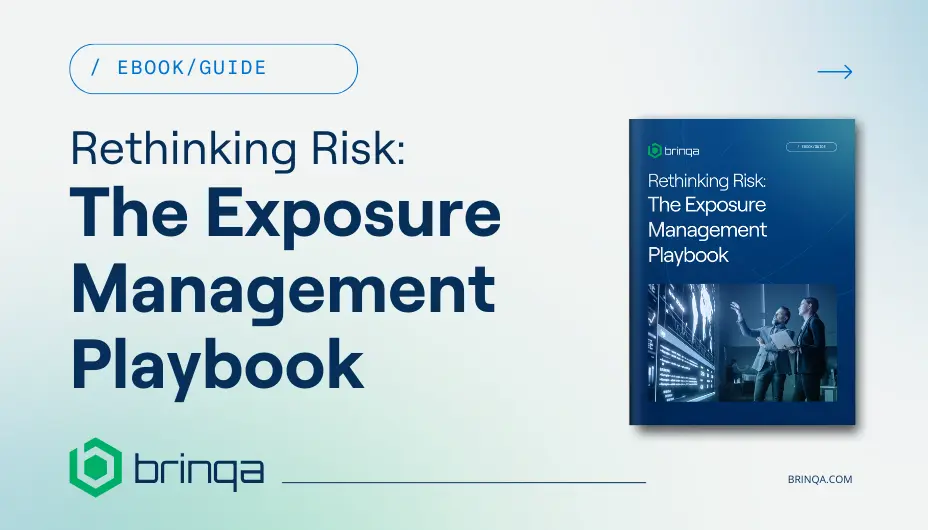Mind the Gap: Closing Vulnerability Management Gaps – A Hero’s Guide to Exposure Management
by Brinqa, Security Experts//6 min read/

You know the drill: the more data you collect, the less clarity you seem to have. Vulnerability scanners, CMDBs, cloud tools, asset inventories… all generating massive amounts of data that rarely agree on what’s truly at risk. What begins as an effort to improve visibility often results in endless lists of “critical” issues, duplicated tickets, and frustrated remediation teams.
The Reality Behind the Gap
As Brinqa’s VP of Customer Success James Walta explained during a recent webinar, “There’s no such thing as a perfect CMDB, but there’s more valuable information in your environment than you probably realize.” Most organizations have pieces of the puzzle spread across multiple tools and teams. Without aggregation and normalization, that scattered data leads to inconsistent risk views and wasted effort.
The first major gap in vulnerability management isn’t in detection, it’s in context. Security teams know what’s vulnerable, but not how that vulnerability matters to the business. The difference between a fix that protects a critical revenue-generating system and one that touches a test server is immense; yet both often receive equal priority.
The Power of Business Context
Mature exposure management programs start by applying context: connecting technical findings with business impact, ownership, and environmental relevance. That means going beyond asset tags to understand which applications drive key operations, which systems are exposed externally, and who actually owns each environment.
Brinqa customers have found that once they can apply this context at scale, credibility with remediation teams improves. Instead of receiving massive spreadsheets of undifferentiated vulnerabilities, teams receive focused, prioritized tasks that clearly tie to business risk. Time, effort, and accountability align.
Closing the Ownership and Automation Gap
Even with context, another challenge often emerges: ownership. In large, distributed environments, it’s common for 30% or more of assets to lack a clearly identified owner. That’s where critical vulnerabilities linger longest.
Organizations that successfully close this gap use automation to mobilize data intelligently. Rather than manually creating and routing tickets, they define clear remediation rules that automatically assign issues to the right teams based on asset type, business unit, and environment. As Walta put it, “The goal is standardization and automation, because manual assignment simply can’t scale.”
By automating workflows and integrating with systems like ServiceNow or Jira, remediation teams spend less time sorting through data and more time fixing real problems. The results are measurable: shorter mean time to remediation (MTTR), fewer SLA breaches, and higher trust across teams.
Measuring Success in a Moving Landscape
The most common misconception in vulnerability management is that the program can one day be “done.” In reality, exposure management is a constantly moving target. Threats evolve, infrastructure changes, and new data sources appear. Success is measured not by completion, but by progress – how consistently an organization adapts and improves.
Brinqa customers track this progress through clean, actionable dashboards that highlight trending data: how quickly vulnerabilities are being resolved, whether SLAs are improving, and where ownership gaps remain. As Walta emphasized, “It’s not about perfection, it’s about continuously evolving your strategy.”
The Next Step: Intelligence with Purpose
As exposure management programs mature, the next challenge isn’t collecting or routing data, it’s understanding it. That’s where BrinqaIQ, Brinqa’s explainable AI assistant, takes the conversation forward, helping teams explore vulnerabilities, assets, and threats using natural language.
By making intelligence transparent and accessible, BrinqaIQ helps turn context into clarity, so teams not only see risk faster, but can explain and act on it with confidence. It’s the next logical step in closing the gap between visibility and decision-making.
Building a Future-Ready Program
Ultimately, closing the gap in vulnerability management requires three things:
- Context – linking exposures to business impact and environmental reality.
- Automation – ensuring the right people receive the right tasks at the right time.
- Evolution – treating exposure management as a living, adaptive process.
Organizations that embrace this mindset aren’t just reducing vulnerabilities, they’re creating a resilient, data-driven security culture capable of keeping pace with modern risk.
Join the Next Conversation
Learn how data context bridges the gaps in vulnerability management. Join our next live session to discover how leading organizations transform raw findings into prioritized, actionable insight with contextual exposure management: Context is King: How Data Context Transforms Risk Prioritization in Exposure Management.



